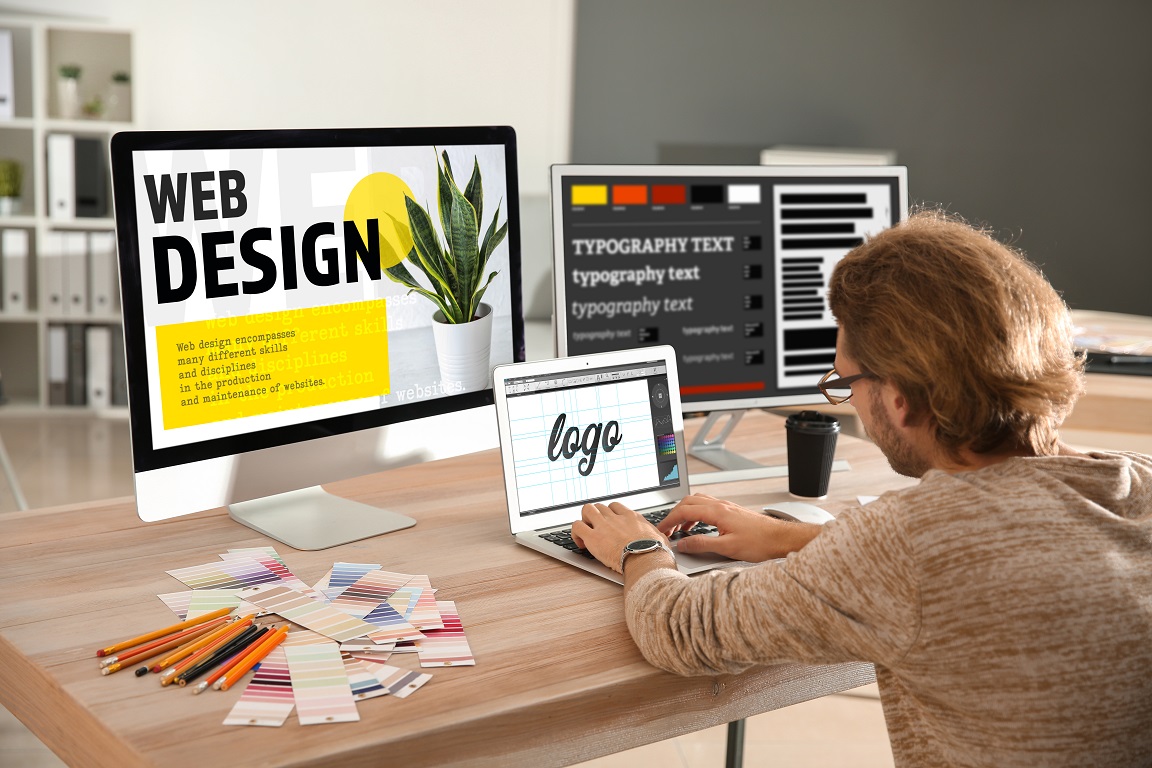Vital Attributes That Specify Quality Web Design Gauteng Services
Vital Attributes That Specify Quality Web Design Gauteng Services
Blog Article
Checking Out Different Kinds Of Website Design to Improve Individual Experience
In the ever-evolving electronic landscape, the exploration of diverse internet layout techniques is extremely important for improving individual experience. Incorporating interactive elements further enhances the individual trip, making websites more interesting and dynamic.
Responsive Internet Layout
In an age where electronic intake transcends several tools, responsive internet layout has become a keystone of reliable individual experience. This adaptability not just enhances visual charm yet additionally improves access and navigation, important for retaining customer involvement.
The execution of RWD starts with a mobile-first approach, focusing on the smallest display size to assure capability and visual comprehensibility. By utilizing CSS media questions, developers can customize the site's appearance based upon the qualities of each gadget. This makes sure that photos range properly, message remains readable, and interactive elements are easily accessible, thus reducing the demand for extreme scrolling or resizing.
In addition, receptive layout adds to boosted search engine optimization (SEO) by offering a regular user experience and lowering bounce rates. Online search engine prefer mobile-friendly websites, making responsiveness an integral part of digital approach. In essence, receptive website design is indispensable for suiting diverse individual communications, cultivating a interesting and inclusive online existence.
Minimalist Style Approaches
Minimalist design's appeal lies in its capability to boil down complicated info right into its most important aspects, developing a minimalist and intuitive user experience. By focusing on simpleness, minimalist design removes extraneous information, enabling individuals to concentrate on core web content and functionality. This technique is identified by sufficient white area, clean lines, and a minimal color combination, all of which add to an aesthetically pleasing and efficient interface.

Additionally, minimalist design supports much faster loading times, as less graphical aspects and decreased material intricacy can lower the amount of information required to provide a web page. This performance not only boosts user satisfaction but also adds to far better search engine optimization (SEO) rankings. Minimal design is not simply a stylistic choice yet a critical technique that can substantially affect individual engagement and conversion prices.
Interactive and Dynamic Aspects
Interactive and dynamic components are critical in enhancing customer interaction and creating unforgettable internet experiences. These elements consist of computer animations, float effects, sliders, and real-time updates, which not just record customers' attention but additionally facilitate smooth navigating. By including these functions, designers can transform original site static pages into engaging digital settings that motivate communication and exploration.
Animations, for circumstances, can lead customers with complicated details without frustrating them, while hover results provide prompt responses, enhancing the user's understanding of clickable locations. Web Design Gauteng. In addition, sliders permit users to check out web content at their own speed, and real-time updates ensure that information presented is current and appropriate, preserving the user's passion

User-Centric Style Techniques
A cornerstone of efficient internet style is the execution of user-centric layout methods, which prioritize the demands and preferences of the published here end individual above all else. By concentrating on the customer, developers can create instinctive, easily accessible, and interesting experiences that boost satisfaction and drive interaction.
One basic method is use screening, which entails observing actual users as they engage with the design. This process identifies pain points and areas for enhancement, permitting developers to fine-tune the user interface iteratively. Integrating comments loopholes and agile methodologies additionally makes sure the design develops abreast with individual expectations.
Additionally, ease of access is an essential element of user-centric layout. Making certain that digital platforms come to all individuals, including those with disabilities, improves inclusivity and broadens the prospective user base. This can be attained via compliance with Internet Content Accessibility Standards (WCAG) and the thoughtful application of layout principles like navigation, readability, and contrast.
Eventually, effective user-centric style promotes a seamless link between the user and the digital atmosphere, boosting overall individual experience.
Implementing Most Recent Design Fads
In the world of web style, remaining abreast of the most recent style patterns is necessary for developing visually compelling and useful interfaces that astound customers. Minimalist style, defined by clean lines and sufficient white space, allows individuals to focus on content without unnecessary disturbances.

Furthermore, integrating the most up to date typography patterns, such as variable fonts, supplies adaptability and versatility throughout different devices and display dimensions, ensuring uniformity in user experience. Ultimately, dark mode styles have actually gained appeal due to their aesthetic allure and power effectiveness on OLED displays. By tactically implementing these patterns, internet designers can produce straightforward and ingenious internet sites that resonate with contemporary audiences.
Verdict
A detailed expedition of numerous web style approaches is crucial for boosting user experience. Eventually, a informed and balanced technique to web style significantly enhances customer complete satisfaction and interaction, leading to boosted overall site efficiency and success.
In the ever-evolving electronic landscape, the expedition of diverse internet design approaches is paramount for boosting individual experience.A foundation of effective internet style is the application of user-centric style techniques, which focus on the requirements and preferences of the end individual over all else. Making certain that electronic platforms are accessible to all users, consisting of those with disabilities, improves inclusivity and broadens the potential individual base.In the realm of internet layout, remaining abreast of the most recent layout patterns is essential for developing practical and aesthetically engaging user interfaces that captivate customers (Web Design Gauteng).An extensive exploration of different web layout methodologies is web crucial for enhancing user experience
Report this page